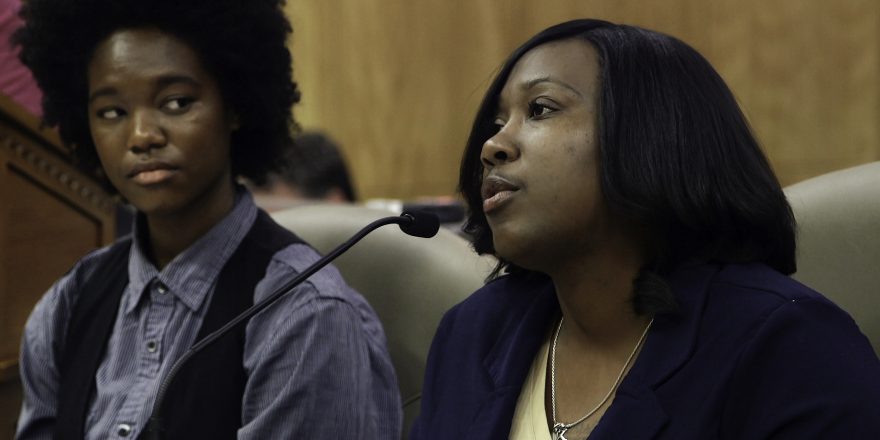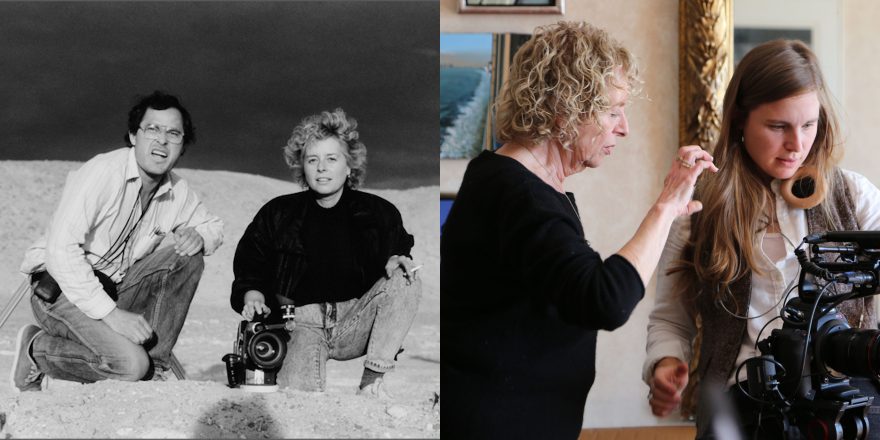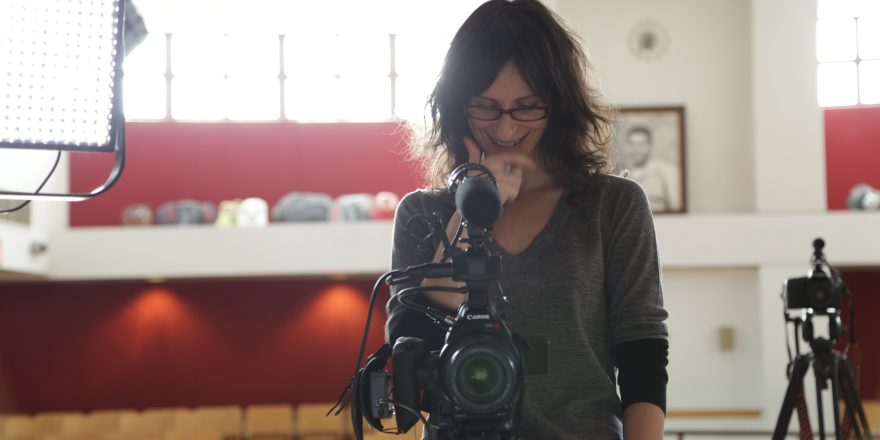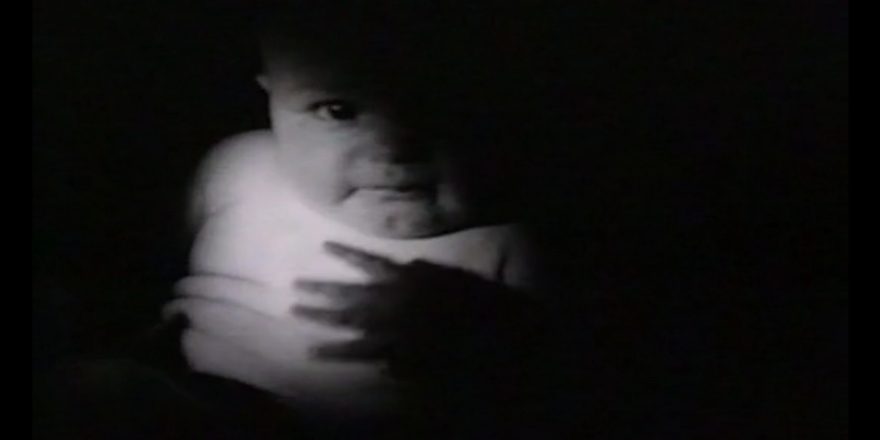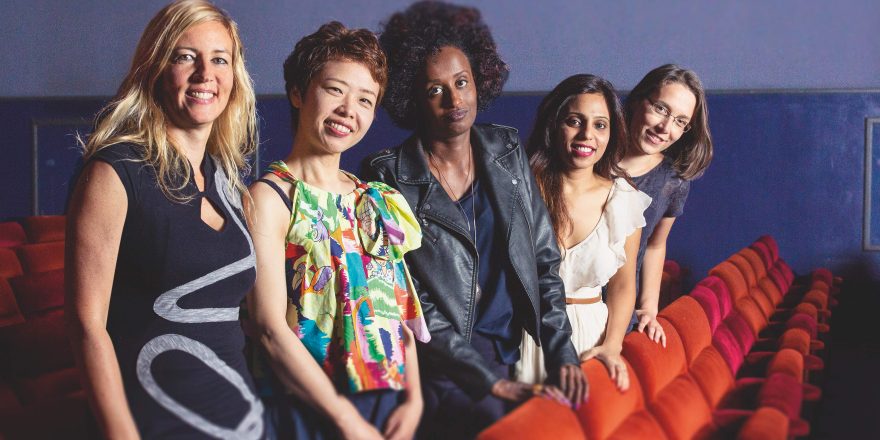Every January, I – like many filmmakers – make the pilgrimage to the Sundance Film Festival to see my colleagues’ movies, have industry meetings about my upcoming projects, and pretend the parka-clad person standing next to me isn’t famous. But in 2017, I was having a hard time keeping my mind focused on work because I had a big personal decision to make. After years of pain and procedures, my doctors were encouraging me to have my uterus removed as soon as I returned from Park City.
For as long as I could remember, I had suffered from a very heavy menstrual cycle. In my late 20s, my hemoglobin levels got so low that one intense Russian hematologist exclaimed, “I’m surprised that you’re still alive.” Take my word for it, it’s extremely difficult to do long days on set when your blood is so depleted that you can barely function.
It turned out that I, like 80 percent of African-American women, had fibroids. Uterine fibroids affect an estimated 26 million women in the United States across all racial backgrounds, but Black women are three times more likely to be hospitalized for them. At the time of my diagnosis, my fibroids had expanded my uterus so much it could have held a four-month fetus. So, my doctor and I decided I should get uterine fibroid embolization (UFE), a laparoscopic procedure that stops the blood flow to the fibroids, causing them to shrink. This was not a permanent fix, but would work for a number of years. There was a chance of infertility, but I could not be concerned about that then. I had no other choice.
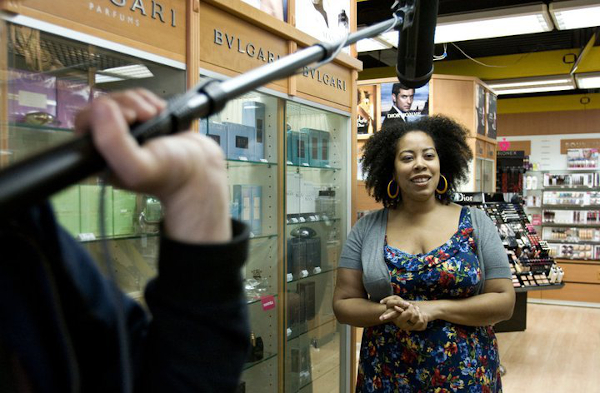
Overall, the surgery was fairly painless, and I felt great until my late thirties, when I started to get different symptoms: severe cramping and pain. I was miserable, not just physically, but emotionally. Living with constant pain and periods that verged on hemorrhaging adversely affected my overall quality of life. But I lived with it, because I didn’t want another surgery.
A few years later, I decided to try to get pregnant through a donor who was a friend. After many fertility tests and doctor’s visits, I learned that not only were my fallopian tubes blocked, but my uterus was so damaged from the decreased blood flow following my UFE surgery that I had less than a five percent chance of getting pregnant, and if I did beat those odds and conceive, I would likely miscarry.
This was a huge blow.
After the shock wore off, my doctor suggested that, because I was unlikely to ever sustain a healthy pregnancy and was still in a lot of pain, I should consider getting a hysterectomy and remove my cervix and uterus. My fibroids would be gone for good. As would my period. As would my fertility. I couldn’t believe that was my only option.
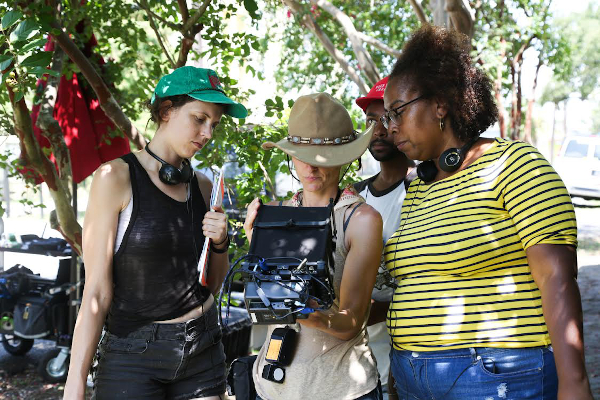
I had always known that a hysterectomy might be in my future, but thought I’d have a myomectomy first, preserving my uterus, and while the fibroids abated as a result of that surgery, I could quickly get pregnant, have a baby and then get a hysterectomy. But the chances of that working out exactly how I had wanted had now dwindled to five percent. The pain and quality-of-life issues had taken their toll. At 42, I was ready for this to be over.
As you can imagine, I was in a pretty weird headspace when I met Erika Cohn. Over tea at the Utah Film Office, Erika told me about a documentary film she had been working on for the past six years. The main character was Kelli Dillon, a Black woman and domestic violence survivor who had been forcibly sterilized at the age of 24 in the Central California Women’s Facility. The film’s power came from the fact that this wasn’t just Kelli’s story. Nearly 1,400 sterilization procedures occurred between 1997 and 2013. Women (mainly women of color) were falsely told they had various maladies like cervical cancer, and doctors were performing tubal ligations during labor and delivery or hysterectomies without consent. The film follows Kelli and her lawyer Cynthia Chandler’s fight to pass a bill banning these sterilizations and providing reparations to survivors.
This story shocked me, even though, as a Black woman living in America, I knew that forced sterilizations happened outside of prisons. It turns out that in the 1930s, Adolf Hitler proudly told his comrades how closely he followed American eugenics practices. Nazis even came to California to learn eugenics practices from the U.S., the best in the business. Politician and hero Fannie Lou Hamer, in 1965, was given a hysterectomy without her consent by her doctor. These procedures were happening so often that they were called a “Mississippi appendectomy.”
In the United States, thousands of Black women have been sterilized without their knowledge or consent through state-enforced eugenics programs. This is a history that most people do not know about, but it is an open secret in communities of color. As a Black woman, I had heard these stories and I always thought someone should make a film about modern-day eugenics practices to bring these injustices to light. I knew I had to help produce Erika’s film.

Throughout the four years that I worked on Belly of the Beast, there was a line in the film that always haunted me. In an interview, Kelli tearfully said something that deep down inside I felt as well. All of these horrific violations against her and lack of accountability proved to her that, “As a Black woman, my life wasn’t shit.” Kelli’s story is her own and the violations that happened to her are horrific, however one thing that unifies every Black woman in the U.S. is a moment where she has had this exact feeling. A moment where our government proved to us that our lives had no value.
In July of 2020, Kamala Harris placed a bill on the Senate floor called the Uterine Fibroids Education Act, which would give millions of dollars for fibroids research. It took a State Representative, Yvette Clarke, and now-Vice President Kamala Harris, a Black woman in one of the highest positions in the land, to give fibroid research a national platform. When I heard about this bill, I thought to myself, why hadn’t this research happened when I was younger? What if this had happened when I was in my twenties? What would that have meant for my life? Would I be a mother now?
Ultimately, a hysterectomy was the best choice that I could have made under the circumstances that I was in, but because of the lack of research funding for this condition, there was no real choice. Black women all over the country, particularly in the South where I live, are having to make hard “choices” like this every day. Until reproductive justice is prioritized, and sterilization is seen as a truly last-resort option, as opposed to “health care” for marginalized individuals, we’ll never really have control of our reproductive health.
Everyone deserves the right to reproductive healthcare and the ability to have a family if they want one. Systemic racism and population control through imprisonment and “healthcare” has to stop. Black, Indigenous and other people of color know through lived experience that forced sterilizations have been occurring in the U.S. for decades. It’s time that everyone does.
Featured image shows Kelli Dillon testifying in Erika Cohn’s Belly of the Beast.


